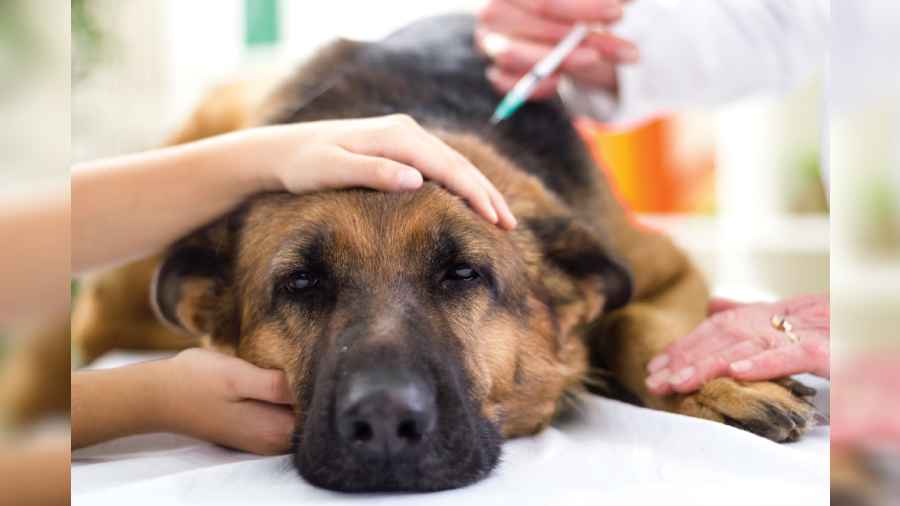Our society has shifted towards pet parenting from pet ownership nowadays. The increasing emotional bond between the pet parent and their pet demands better understanding of their health and healthcare system. The key is in understanding the specific breed and their diseases. Our township, along with the rest of Kolkata, is seeing a sharp increase in pet population every year. The inclination is to adopt foreign breed dogs. Every breed is different in its susceptibility to diseases. This article will help pet parents understand their furry wards and their special needs.
1. Labrador retriever
The Labrador is a loyal companion and very good family dog. Due to their active nature, they need plenty of space. They never show unprovoked aggressive behavior. Other than as companion dog, they can also be used for therapy or rescue work.
A) Obesity is very common in this breed. In a study by Davison et al (2017) in theJournal of Veterinary Internal Medicine it is found that a deletion in the pro-opiomelanocortin gene in Labrador retriever is associated with increased appetite and risk of obesity.
B) Hip dysplasia is also very common in Labradors. This is basically a polygenic trait which is affected by environmental factors. It is an abnormal formation of the hip socket which may cause lameness and arthritis gradually. Elbow dysplasia is also reported in this breed.
C) Cataracts and retinal dysplasia are also observed frequently in this breed.
2. German shepherd

This breed shows wide array of acceptability among pet lovers. They are great companion animals. They can also be used for disability assistance, search and rescue and police work.
A) Hip and elbow dysplasia is very common in this breed. Early diagnosis by the vet may help the animal from future complications.
Selecting a good ethical breeder is also very important. Healthy diet instructed by veterinarian should always be followed. To prevent orthopedic diseases appropriate calcium levels in the diet are vital.
The ratio of calcium and phosphorus should also be balanced in the diet. As imbalances in calcium and phosphorus levels may cause musculoskeletal complications. German shepherds must receive adequate amount of vitamin D and vitamin A in their diet.
B) Exocrine pancreatic insufficiency is also very common in this breed. It is the inability to properly digest food due to a reduction in digestive enzymes produced by the pancreas. It is a functional diagnosis based on measuring decreased pancreatic secretion capacity by pancreatic function test. The exocrine pancreas has a large reserve secretory capacity, and maldigestion signs are usually not seen until 90 per cent of the secretory capacity is lost. Exocrine pancreatic diseases in dogs that may result in clinical signs of EPI include pancreatic acinar atrophy, chronic pancreatitis and neoplastic diseases. Replacement therapy with enzyme supplements is needed to compensate for the lack of enzyme production in dogs with EPI. Vitamin B12 deficiency is common in dogs with EPI. Serum cobalamin level should be periodically evaluated in dogs with EPI.
C) Alsatians have a higher-than-normal incidence of Von Willebrand disease. This is a hereditary blood clotting disorder. Degenerative myelopathy is also very common in this breed.
3. Pug
Pugs are even-tempered, sociable, gentle and charming companion animals.
a) Brachycephalic airway obstructive syndrome induced respiratory distress is very common in this breed. Pharyngeal gag reflex is also very common in them. Stenotic nares can make their breathing even more difficult.
b) Due to prominent skeletal brow ridges pugs are susceptible to eye injuries including proptosis, scratched corneas and entropion.
Keratoconjunctivitis sicca, macro blepharon, distichiasis, corneal pigmentation and vascularization are also common conditions in Pugs.
c) Constrictive myelopathy involving a fibrous band around the spinal cord is a newly recognized disease in pug breed.
d) Necrotizing meningoencephalitis is also identified among Pugs in recent years. Though very little information is available regarding geographical distribution.
- To be continued
